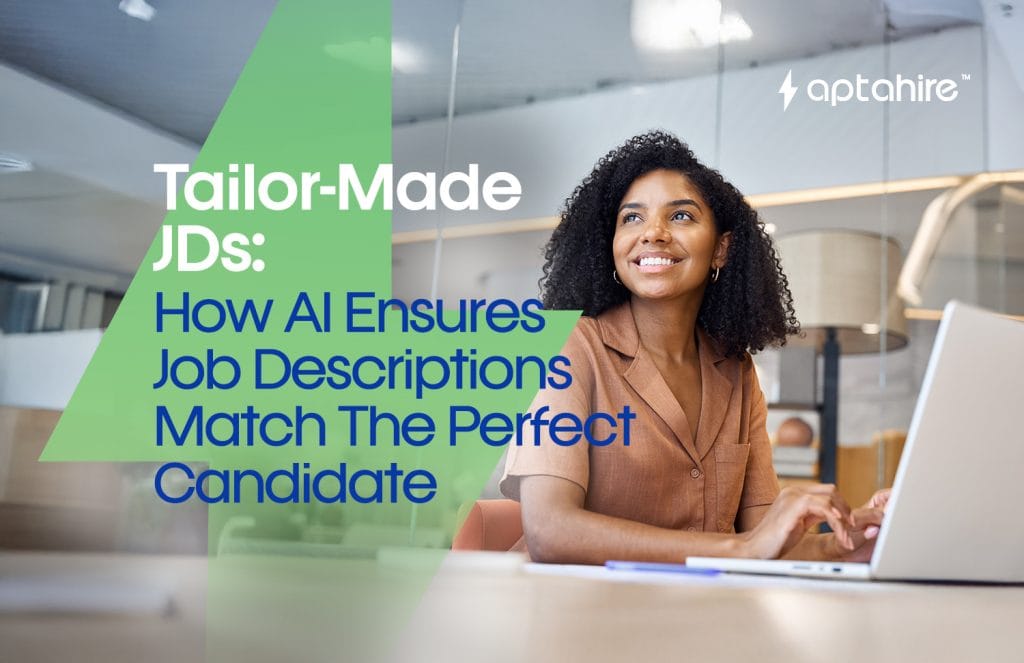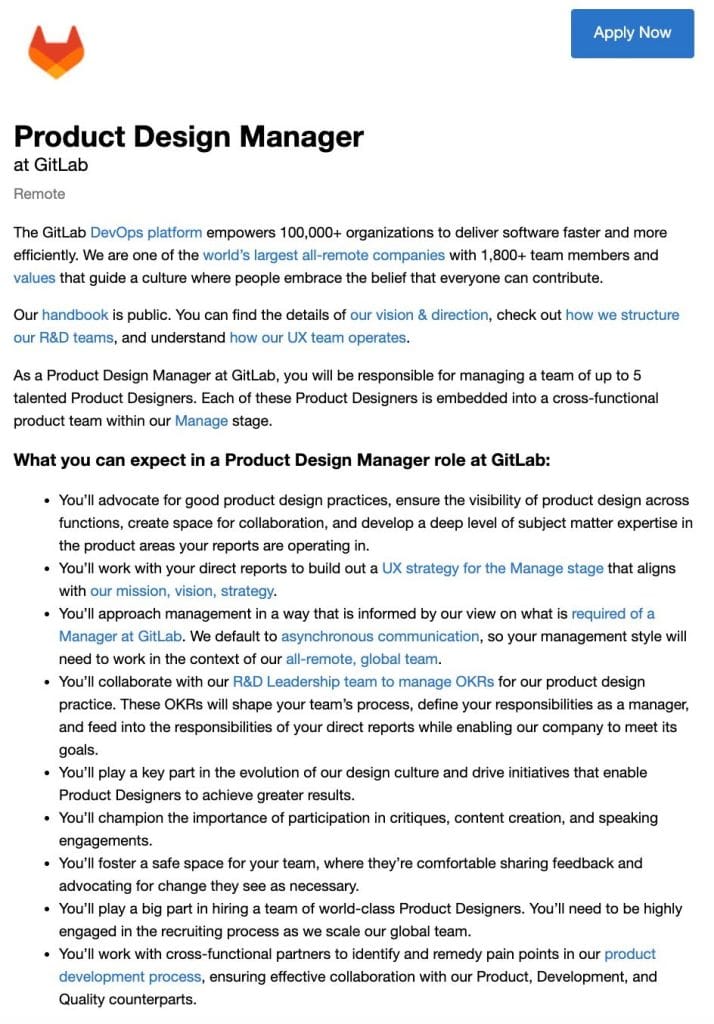Tailor-Made JDs: How AI Ensures Job Descriptions Match the Perfect Candidate

Introduction
In today’s fast-evolving job market, where the competition for top talent is fierce, generic job descriptions (JDs) simply don’t cut it anymore. Companies are realizing that a one-size-fits-all approach to hiring is inefficient, leading to mismatched expectations, high turnover rates, and wasted resources. Enter Artificial Intelligence (AI), a game-changer in creating tailor-made job descriptions that perfectly align with the ideal candidate.
AI is not only transforming how job descriptions are written but also ensuring that they attract, engage, and retain the right talent.
The Problem with Traditional Job Descriptions
Most traditional job descriptions suffer from a range of issues:
1. Vague and Overused Language
Traditional JDs often contain buzzwords and generic phrases like “team player” or “go-getter,” which fail to provide clarity on the actual job responsibilities. Candidates struggle to understand the real expectations, leading to applications from individuals who may not be the best fit.
2. Unconscious Bias in Wording
Many job descriptions unknowingly contain gendered or exclusionary language that can discourage diverse candidates from applying. For example, research has shown that words like “competitive” and “dominant” tend to attract more male applicants, while words like “supportive” and “collaborative” appeal more to female candidates.
3. Overloaded or Unrealistic Requirements
Employers sometimes list an exhaustive set of qualifications that aren’t truly necessary for success in the role. This discourages capable candidates who may not meet every requirement but could still be a great fit. Studies indicate that women, for instance, are less likely to apply if they don’t meet 100% of the criteria, whereas men are more likely to apply even if they meet only 60%.
4. Static and Outdated Descriptions
As industries evolve, so do job roles. However, many companies fail to update their job descriptions accordingly. This leads to JDs that no longer reflect current responsibilities, making it difficult for recruiters to attract the right talent.
5. Lack of SEO Optimization
Traditional job descriptions are often not optimized for search engines or job board algorithms. If a JD doesn’t include relevant keywords or lacks a structured format, it may fail to reach the right candidates on platforms like LinkedIn or Indeed.
This outdated approach often results in poor candidate experiences, unqualified hires, and frequent resignations, ultimately affecting the company’s bottom line.

Sample Traditional Job Description
Source: https://www.linkedin.com/business/talent/blog/talent-acquisition/job-descriptions-that-win
How AI is Revolutionizing Job Descriptions
AI is stepping in to solve these issues by leveraging natural language processing (NLP), machine learning, and data-driven insights to craft hyper-personalized job descriptions. Here’s how AI ensures JDs are aligned with the perfect candidate:
1. Data-Driven Candidate Profiling
AI analyzes data from multiple sources, including:
- Past successful hires
- Industry trends
- Job market analytics
- Employee feedback
By processing this data, AI understands what makes a great candidate for a specific role and tailors JDs accordingly.
2. Bias-Free, Inclusive Language
Traditional job descriptions often contain unintended biases. AI tools, such as Textio and Gender Decoder, help detect and eliminate gendered or exclusionary language, making JDs more inclusive. For example, words like “aggressive” and “dominant” may deter female candidates, whereas “collaborative” and “problem-solving” attract a broader talent pool.
3. Customization Based on Role & Industry Trends
AI ensures JDs remain relevant by continuously analyzing industry trends. It suggests updates based on:
- Emerging skills in demand
- Salary benchmarks
- Required certifications and qualifications
For instance, in the tech industry, AI can dynamically update job descriptions to reflect the latest programming languages and frameworks.
4. Predictive Analytics for Job Success
AI predicts the success of a candidate by assessing how well their experience, skills, and preferences align with job expectations. Using historical hiring data, AI-driven platforms suggest optimal job descriptions that attract high-performing candidates.
5. Personalization for Different Candidate Segments
AI enables hyper-personalization by crafting JDs that appeal to different candidate personas. For example:
- Entry-Level Candidates: Emphasizing learning opportunities and career growth.
- Mid-Career Professionals: Highlighting leadership opportunities and work-life balance.
- Senior Executives: Focusing on strategic impact and vision alignment.
6. Optimizing for SEO & Job Board Rankings
AI optimizes JDs with the right keywords to improve visibility on job boards like LinkedIn, Indeed, and Glassdoor. It ensures:
- Relevant keywords are naturally integrated.
- JDs rank higher in search results.
- The format is ATS-friendly (Applicant Tracking System).
7. A/B Testing for Higher Engagement
AI can generate multiple variations of job descriptions and conduct A/B testing to determine which version resonates best with potential candidates. This ensures that companies use the most effective JD for attracting top talent.
The Future of AI-Generated Job Descriptions
Aptahire’s Free JD Generator
<need to insert Aptahire JD generator>
With advancements in AI, job descriptions will continue to evolve in ways we can only imagine. Here’s what the future holds:
1. Real-Time JD Updates
AI-driven tools will continuously refine job descriptions based on market trends, company needs, and performance analytics. Companies will no longer need to manually update JDs, AI will ensure they stay relevant and competitive at all times.
2. Voice-Activated Job Listings
As voice search and AI assistants like Alexa and Google Assistant become more sophisticated, AI-generated job descriptions may be delivered via voice-enabled job searches. Candidates could ask, “Find me a senior marketing role in New York,” and AI would provide a perfectly tailored JD.
3. Augmented Reality (AR) and Virtual Reality (VR) Job Previews
AI-powered AR and VR experiences could allow candidates to interact with job descriptions in immersive ways. Instead of reading a text-based JD, candidates might be able to step into a virtual office, experience a “day in the life” of an employee, or interact with AI-generated avatars of potential coworkers.
4. AI-Powered Interview Simulations
Future job descriptions could integrate AI-driven chatbots or virtual assistants that allow candidates to go through simulated job scenarios. This would help both recruiters and applicants assess real-world skills before an official interview even takes place.
5. Behavioral and Cultural Fit Analysis
AI will go beyond hard skills and experience, evaluating a candidate’s soft skills and cultural fit based on behavioral assessments. AI-generated job descriptions will be tailored not only for skill alignment but also for ensuring that candidates match the company’s values and work culture.
Conclusion
AI is revolutionizing job descriptions, making them more precise, engaging, and effective in attracting the right candidates. By leveraging AI-driven insights, companies can create JDs that not only resonate with top talent but also foster diversity, inclusivity, and long-term retention. In a world where the right hire can make all the difference, AI-powered job descriptions are the future of recruitment.
Embrace AI, tailor your JDs, and watch your hiring success soar!
FAQs
- How to tailor a CV to a JD?
To tailor your CV to a Job Description (JD):
- Match your skills with the JD’s requirements.
- Use keywords from the JD to pass ATS screening.
- Highlight relevant experience that aligns with the role.
- Quantify achievements to showcase impact.
- How to prepare a JD?
A Job Description (JD) should be clear, concise, and structured. Include:
- Job Title (precise and industry-standard).
- Responsibilities (daily tasks and key contributions).
- Skills & Qualifications (mandatory and preferred).
- Company Culture & Benefits (why candidates should apply).
- Application Process (next steps).
Aptahire is the best free tool for generating highly accurate, role-specific JDs effortlessly.
- What is a tailor-made CV?
A tailor-made CV is customized for a specific job, aligning skills, experience, and keywords with the JD’s requirements to increase hiring chances.
- What is JD in a resume?
JD stands for Job Description, which outlines the duties, skills, and qualifications for a role. When writing a resume, referencing the JD helps tailor your CV to match employer expectations.
- What is skill in CV?
Skills in a CV refer to the abilities and competencies relevant to a job. They can be:
- Hard skills (technical abilities like coding, data analysis).
- Soft skills (communication, teamwork, leadership).
Including JD-specific skills improves your CV’s visibility in AI-based hiring systems.
